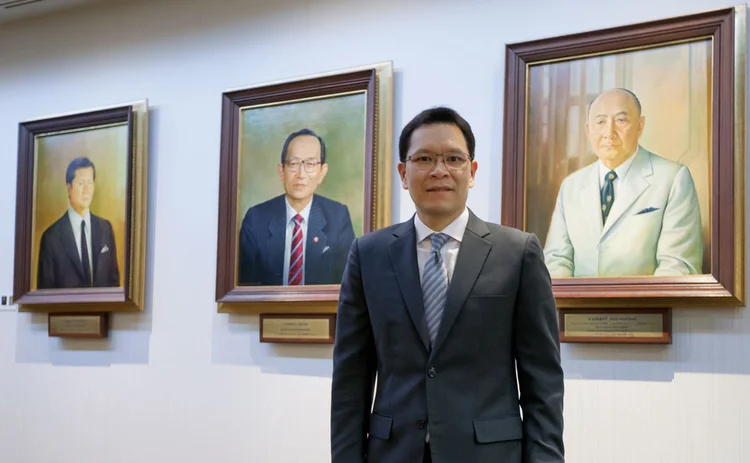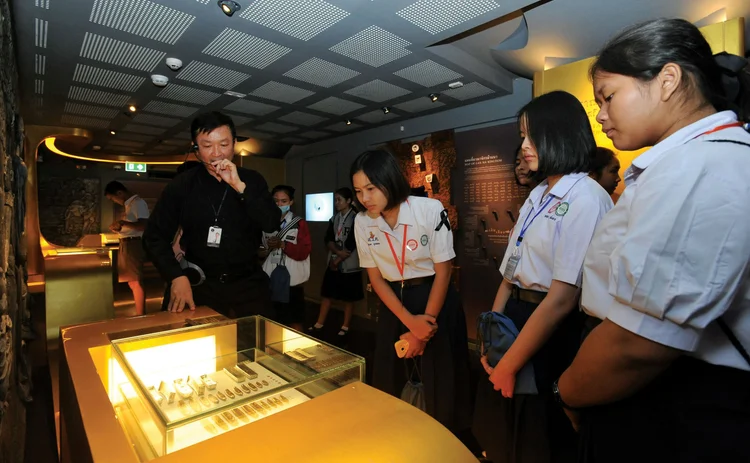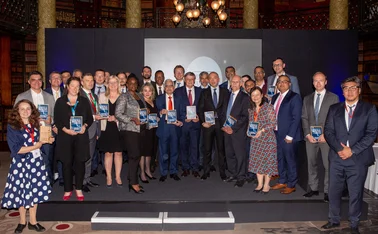
Initiative of the year: Bank of Thailand
Thai central bank used two-way communications to support delivery of major initiatives

Central banks have moved a long way beyond Montagu Norman’s dictum of “never explain, never apologise”. In the 30 years since inflation targeting was first adopted, most central banks worldwide have started publishing much more information, giving more public speeches, and submitting to greater scrutiny from politicians and the press.
Some central banks are now looking to go further. Rather than broadcasting but not receiving, institutions such as the Bank of Thailand are seeking to develop a two-way conversation. Both sides have a lot to learn from one another: the public stands to gain better knowledge of economics and policy choices; central bankers can learn which of their messages get through, and whether there are grievances that are being left unaddressed.
“Central banks are criticised for not listening and living in an ivory tower,” says Sureeratana Luckananit, senior director in the Bank of Thailand’s corporate communications department. “Therefore, we start off with listening to stakeholders’ needs and opinions, as the foundation of effective policy-making.”
By interacting with a wide range of external parties early in the policy-making process, the Bank of Thailand is better able to communicate its intentions, as well as gather feedback and make refinements to its ideas. In this way, effective communications are essential to delivering major initiatives that not only work well, but remain accountable to the people that the central bank is charged with serving. Two recent examples include a new banknote series and an instant payment system.
The Bank of Thailand’s progressively minded governor, Veerathai Santiprabhob, has championed openness since taking over as governor in 2015. Under his leadership, the central bank has found a much broader audience via social media, achieving particular success with Facebook, where the Thai central bank has 546,000 followers. The Bank of Thailand has even reformed one of its journals to be less formal and more accessible – it says each issue now reaches a million readers, up from about 4,000 previously. It also says it collaborates with a wider range of stakeholders, domestically and internationally. This is important in all areas of the central bank’s operations, including its efforts to ensure the baht does not overappreciate.
Symbol of openness
The Bank of Thailand’s push for greater two-way communication is reflected in a move to open up what was once a highly restricted banknote printing plant. To mark its 75th anniversary in 2018, the central bank chose the printworks as the location for the Bank of Thailand Learning Center and museum.
The building, which sits on the banks of the Chao Phraya River, used to be gated and industrial, but it is now a symbol of the central bank’s openness. The space has been redesigned and renovated, becoming a light and contemporary place for the public to engage with the central bank’s work and learn about the country’s money. The centre also hosts a co-working space and library.

Educating the public on banknotes has been essential work in recent years, amid the launch of new currency series. In 2015, the Bank of Thailand concluded the production and introduction of the 16th series of baht banknotes. In 2017, it launched commemorative notes in remembrance of the late King Bhumibol Adulyadej, and in 2018, it unveiled series 17.
To help familiarise people with the notes, the Bank of Thailand developed a banknote app. Available in Thai and English, the app shows people how to identify genuine banknotes using three methods: “feel, look, tilt”. Users have awarded the Android app 4.9 stars out of five.
The central bank has also been investing heavily in automating its production operations because of the growing volume of banknotes in circulation. It has automated processes in the finishing section, and has a wide-ranging strategy to introduce technology in other areas of banknote production over the coming years.
Payments reform
Stepping up engagement in other areas, the central bank has worked in collaboration with stakeholders at the Thai Bankers’ Association and commercial banks to launch the digital payment platform PromptPay. Similar in design to the UK’s Faster Payments, PromptPay gives people access to instant, low-cost payments, and represents a major overhaul of the country’s payments infrastructure.
Before PromptPay, the domestic economy was heavily reliant on cash and a costly retail payment system. The government also used cash as its means to distribute social welfare payments throughout the country, increasing the risk of theft and misallocation of funds.
We worked with the Bank of Thailand, the government, the banks and non-banks – everybody worked together on PromptPay
Yos Kimsawatde, Thai Bankers’ Association
“We worked with the Bank of Thailand, the government, the banks and non-banks – everybody worked together on this,” Yos Kimsawatde, head of the payment systems office of the Thai Bankers’ Association, tells Central Banking. “As of the end of 2018, PromptPay had roughly 44 million users, and we killed two birds with one stone: one, citizens now have access to affordable digital payments; and, two, government can now effectively distribute social payments to those that need it.”
The Bank of Thailand has also worked in collaboration with Association of Southeast Asian Nations (Asean) central banks and financial institutions on a cross-border payments project called Asean Payment Connectivity. By the middle of this year, the central bank hopes to link PromptPay with Singapore’s equivalent, PayNow, so that tourists can transact in either country at no extra cost.

Another important effort was the launch of the central bank’s Debt Clinic, the country’s largest initiative for credit card and personal loan debt restructuring. The scheme pools unsecured non-performing loans owed to multiple creditors in a bid to turn them into performing assets, with the aim of helping households to better manage and pay off their debts.
By using effective two-way communication to bring stakeholders on board, the Bank of Thailand has been able to launch initiatives that put it ahead of the curve on payments and banknotes. It is also pushing the boundaries in areas such as fintech, blockchain-based payments and open banking – so it is likely to deliver more breakthroughs in the years ahead.
The Central Banking Awards were written by Christopher Jeffery, Daniel Hinge, Dan Hardie, Rachael King, Victor Mendez-Barreira, Alice Shen and William Towning
Only users who have a paid subscription or are part of a corporate subscription are able to print or copy content.
To access these options, along with all other subscription benefits, please contact info@centralbanking.com or view our subscription options here: http://subscriptions.centralbanking.com/subscribe
You are currently unable to print this content. Please contact info@centralbanking.com to find out more.
You are currently unable to copy this content. Please contact info@centralbanking.com to find out more.
Copyright Infopro Digital Limited. All rights reserved.
You may share this content using our article tools. Printing this content is for the sole use of the Authorised User (named subscriber), as outlined in our terms and conditions - https://www.infopro-insight.com/terms-conditions/insight-subscriptions/
If you would like to purchase additional rights please email info@centralbanking.com
Copyright Infopro Digital Limited. All rights reserved.
You may share this content using our article tools. Copying this content is for the sole use of the Authorised User (named subscriber), as outlined in our terms and conditions - https://www.infopro-insight.com/terms-conditions/insight-subscriptions/
If you would like to purchase additional rights please email info@centralbanking.com
Most read
- ECB says iPhone is currently incompatible with digital euro
- Supervisors grapple with the smaller bank dilemma
- ‘Do I die, or do I survive?’ Officials reflect on Basel III complexity






